2-9. In all his readings for Bishop Jaussen there was
only at one other place Metoro mentioned hakakaikai toki
(although at this place twice):
 |
 |
 |
|
e tae ai ihe tagata
hakakaikai toki*
tae ai ihe tagata tua tino e hiti
* Jaussen had first
here written kua kake - cfr
Ba4-31. |
|
...
Tu'i Tofua was the son of Vakafuhu.
His mother was Langitaetaea, but she
was only one of the many young women whom
Vakafuhu had living behind the fences of
his dwelling. When Tu'i Tofua grew he
was given the first-born sons of all the
wives for his companions, and they all used
to play sika outside the enclosure of
Vakafuhu. They made their sika
of clean-peeled sticks and threw them in
turn along the
ground, they glanced them off a mound and
each one tried to make the longest throw.
One day while Vakafuhu
was sleeping off a kava-drinking those boys
were playing their game outside, and Tu'i
Tofua threw his sika. Then indeed
the enormous strength of Tu'i Tofua
made that sika fly over the fences
into his father's place.
It landed where the women
were and they all began to giggle, those
girls, and shriek and laugh. They did this
because they wanted that handsome youth to
come among them, they desired him. More than
his father they desired him. They fell with
joy upon the sika of their master's
son, and snapped it. When he came inside to
get it back they called out things that made
him embarrased. 'Haven't you got another
long thing there, Tu'i?' those women
said. 'This one's broken.' And they put
their hands across their faces and they
laughed ...
Tui.
1. To sew mats, to make strings.
E-tahi tuitui reipá i Te Pei, ekó rava'a
e-varu kaukau; i-garo ai i Hiva, i te
kaiga, a necklace of mother-of-pearl is
on te Pei, few will find it (lit:
eight groups of people); it has remained in
Hiva, in our homeland. 2. The three
stars of Orion's Belt. Vanaga.
Takau.
Mgv.: ten
pairs. Ta.: toau, id. Mq.: tekau,
id. To.: tekau, id. Ma.: tekau,
ten. Churchill.
Teka.
Tekai, curl, a round ball, as of twine.
(Tekateka) hakatekateka,
rudder, helm. Churchill. Routledge's
informants still knew the names of the
immigrant canoes (RM:278); they were given
as 'Oteka' and 'Oua'. One
Rongorongo text shows ua as the
term used for two canoes, while RR:76
[Barthel's no. 76, GD111] (phallus grapheme
ure, used in this case for an old
synonym teka; compare TUA. teka
'penis of a turtle', HAW. ke'a
'virile male') tends to confirm the oral
tradition with a transpositional variant
(Barthel 1962:134). (Barthel 2) Pau.
teka, arrow. Ta.: tea, id. Mq.:
teka, a game with darts. Sa.: te'a,
id. Ma.: teka, id. Churchill. Mgv.
teka, a support, scaffold. Ta.: tea,
the horizontal balk of a palisade, the
crossbeam of a house. Mq.: tekateka,
across, athwart. Ha.: kea, a cross.
Churchill.
65 - ono tekau ma rima illustrates
how in the Maori dialect tekau stands
for 10. Harawira. |
|
Ba4-26 (150) |
Ba4-27 |
Ba4-28 |
|
CLOSE TO
THE FULL MOON: |
|
Al Zubānā-14a (Claws) /
Visakha-16 (Forked)
/
Root-3 (Badger)
ZUBEN ELGENUBI (Southern Claw) =
α
Librae
(224.2),
ξ
Bootis,
ο
Lupi (224.5) |
KOCHAB (Kakkab, Babylonian for Star) = β
Ursae Min.
(225.0),
ξ Librae (225.7) |
KE KWAN (Cavalry Officer) =
β
Lupi
(226.3),
KE KWAN =
κ
Centauri (226.4), ZUBEN ELAKRIBI (Claw of
the Scorpion) =
δ
Librae
(226.8),
π¹
Oct.
(226.9)
*185.0 = *226.4 - *41.4 = "Sept 22 (265) =
equinox |
|
Oct 31
(304) |
Nov 1 (Samhain) |
2 (488 -
182 = 306) |
|
AUG 28 |
29 |
30 (242 =
424 - 182) |
|
CLOSE TO THE SUN: |
|
May 1 (Beltane) |
2 (487 =
423 + 64) |
3 (123 =
488 - 365) |
|
Bharani-2 (Yoni) /
Stomach-17 (Pheasant)
π
Arietis (41.2),
MIRAM (Next to the Pleiades) = η Persei
(41.3),
BHARANI = 41 Arietis (41.4),
τ²
Eridani,
σ
Arietis (41.7)
*0.0 = *41.4 - *41.4 |
TA LING (Great Mound)
= τ Persei (42.4)
*1.0 = *42.4 - *41.4 |
ρ
Arietis (43.0),
GORGONEA SECUNDA =
π
Persei
(43.5),
ACAMAR (End of the River) =
θ
Eridani
(43.6),
ε
Arietis (43.7),
λ
Ceti (43.9)
DENEBOLA (β Leonis) |
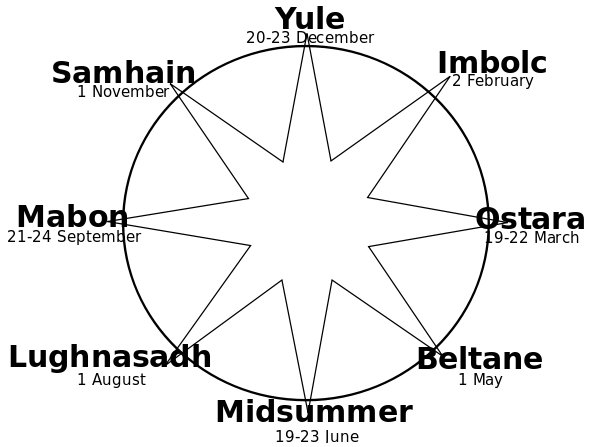 |
|
FEBR 26 (57) |
27 |
28 (424 = 365 + 59) |
Everything is according to order,
they 'glanced' them off a
mound and surely this was referring to the
star named Great Mound.
 |
 |
 |
 |
|
Ba4-29 |
Ba4-30 |
Ba4-31 |
Ba4-32 (156) |
|
tae ai
ihe tagata hakakaikai toki |
kua
kake ko
te kahi |
i te
henua |
|
Kake. Kakea,
to come near, to embark. P Pau.:
kake, to climb, to
ascend. Mgv.: kake, the
arrival of shoals of spawning
fish. Mq.: kake, to climb
up a valley. Ta.: ae, to
climb, to ascend. Churchill.
Mgv.: kake, to strike on
an ocean reef. Ta.: ae,
to strand. Churchill. Sa.:
a'e, upward, to go up;
sa'e, to elevate one leg, as
in the act of falling in a club
match; 'a'e, to ascend,
to rise. To.: hake,
upward, to ascend. Fu.: ake,
up, to ascend; sake, ro
raise the leg at one in derision
or mockery; kake, to
climb, to ascend. Niuē:
hake,
up, going up. Uvea:
ake,
up; kake,
to go up. Ma.: ake,
upward; kake,
to climb, to ascend. Mq.:
ake,
on high, upward; kake,
to ascend. Mgv.: ake,
upward. Bukabuka: ake,
up. Ta.: ae,
up, to go up, to ascend, to
climb. Ha.: ae,
to raise, to lift up, to mount.
Fotuna: no-jikijiake,
to lift up; no-tukake,
to stand upright. Nukuoro:
kake,
to go up. Nuguria:
kake,
up; hanage,
northwest. Rapanui:
kake a,
to go abroad. Vi.:
thake,
upward; thaketa,
to dig or lift up. Churchill 2.
Kahi.
Tuna; two
sorts: kahi aveave, kahi
matamata. Vanaga. Mgv.:
kahi, to run, to flow. Mq.:
kahi, id. Churchill.
Rangitokona,
prop up the heaven! //
Rangitokona, prop up the
morning! // The pillar stands in
the empty space. The thought [memea]
stands in the earth-world - //
Thought stands also in the sky.
The kahi stands in the
earth-world - // Kahi
stands also in the sky. The
pillar stands, the pillar - //
It ever stands, the pillar of
the sky. (Morriori creation myth
according to Legends of the
South Seas.)
|
 |
|
kahi |
|
|
CLOSE TO THE SUN: |
|
May 4 (124) |
5 |
6 |
7 |
|
|
 |
 |
 |
 |
|
Ba4-33 |
Ba4-34 |
Ba4-35 |
Ba4-36 |
|
e
tagata rere toki iti e tagata
mau toki iti - e
kua tuu**
**Jaussen
had here added (above the line)
'ou:
kua tua, sont polis' |
ki te
henua |
|
CLOSE TO THE SUN: |
|
May
8 (128) |
9 |
May 10 |
11 |
 |
 |
 |
 |
|
Ba4-37 |
Ba4-38 |
Ba4-39 |
Ba4-40 (164) |
|
e
tagata rere ki te toki tae ai
ihe tagata - rere toki - e tae
ai ihe tagata. |
|
CLOSE TO THE SUN: |
|
May
12 (132) |
13 |
14 |
May 15 (500 = 365 + 135) |
We should therefore compare with the corresponding place in the E text:
|
Dec 28 |
29 → 408 - 45 = 363 |
30 (361 + 3) |
|
OCT 26 |
27 (300 → 363 - 63) |
28 (→ 365 - 64) |
 |
 |
 |
|
Ea2-13 |
Ea2-14 → 45 |
Ea2-15 |
|
e tagata -
rere toki |
ki te henua |
e tagata
hakakaikai
toki - ki te henua koti |
|
Kaikai. 1.
Cat's cradle, in which patterns are
made by moving a thread through the
fingers of both hands, and are
accompanied by the recitation of
verses (one of the main pastimes of
yore). 2. Sharp: also 'to sharpen'
used instead of hakaka'ika'i.
Vanaga. 1. Mastication, to eat
heavily. 2. Sharp, cutting, edge of
a sword, point of a lance; moa
tara kaikai, cock with long
spurs. Churchill.
Koti. Kotikoti.
To cut with scissors (since this is
an old word and scissors do not seem
to have existed, it must mean
something of the kind). Vanaga.
Kotikoti. To tear; kokoti,
to cut, to chop, to hew, to cleave,
to assassinate, to amputate, to
scar, to notch, to carve, to use a
knife, to cut off, to lop, to gash,
to mow, to saw; kokotiga kore,
indivisible; kokotihaga,
cutting, gash furrow. P Pau.:
koti, to chop. Mgv.: kotikoti,
to cut, to cut into bands or slices;
kokoti, to cut, to saw;
akakotikoti, a ray, a streak, a
stripe, to make bars. Mq.: koti,
oti, to cut, to divide. Ta.:
oóti, to cut, to carve;
otióti, to cut fine. Churchill.
Pau.: Koti, to gush, to
spout. Ta.: oti, to rebound,
to fall back. Kotika, cape,
headland. Ta.: otiá,
boundary, limit. Churchill.
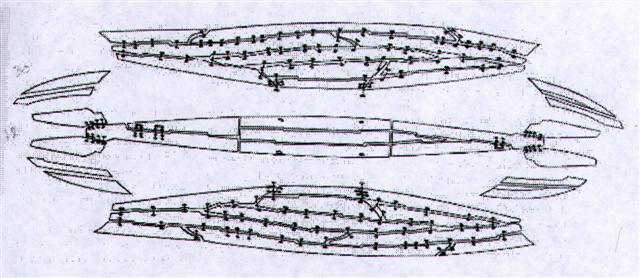
vaka
↔
kava
↕
toki
↔
koti
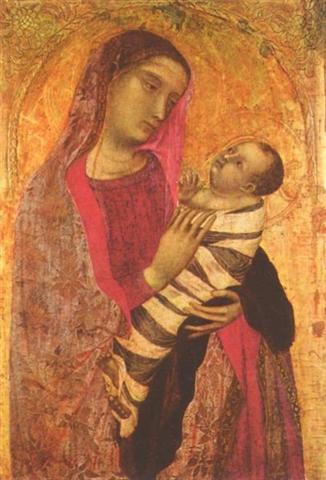 |
|
ψ4 Aurigae (100.5),
MEBSUTA (Outstretched) = ε Gemini
(100.7) |
SIRIUS = α Canis Majoris
(101.2),
ψ5 Aurigae (101.4),
ν Gemini (101.6), ψ6 Aurigae (101.7)
*60.0 = *101.4 - *41.4 |
τ
Puppis (102.2),
ψ7 Aurigae (102.4)
*61.0 = *102.4 - *41.4 |

... The Sothic cycle was based on
what is referred to in technical
jargon as 'the periodic return of
the heliacal rising of Sirius',
which is the first appearance of
this star after a seasonal absence,
rising at dawn just ahead of the sun
in the eastern portion of the sky.
In the case of Sirius the interval
between one such rising and the next
amounts to exactly 365.25
days - a mathematically harmonious
figure, uncomplicated by further
decimal points, which is just twelve
minutes longer than the duration of
the solar year ... |
|
June 29 (180) |
30 |
July 1 (182) |
When reading the B text it seems plausible to associate
hakakaikai toki with
Kochab
... Al Maisān, the title
of γ Geminorum, by some
error of Firuzabadi was applied to this star as
Meissa, and is now common for it. Al Sufi called
it Al Tahāyī; but Al Ferghani and Al Tizini
knew it as Rās al Jauzah, the Head of the
Jauzah, which it marks.
The original Arabic name, Al Hak'ah, a White
Spot, was from the added faint light of the smaller
φ¹and φ²
in the background, and has descended to us as
Heka and Hika. These three stars were
another of the Athāfiyy [tripods used for
cooking] of the Arabs; and everywhere in early
astrology were thought, like all similar groups, to
be of unfortunate influence in human affairs.
They constituted the Euphratean lunar station
Mas-tab-ba-tur-tur, the Little Twins, a title
also found for
γ
and
η
Geminorum; and individually were important stars
among the Babylonians, rising to them with the sun
at the summer solstice, and, with
α
and
γ,
were known as Kakkab Sar, the Constellation
of the King ...
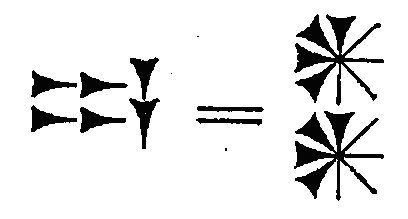
i.e.
with the ancient
Star (Mesopotamian Kakkab) at the north pole, in contrast to the dominant
figure of Sirius
in the E text. First it had been written kua kake
('climbing bird'),
but Easter Island was south of the equator and
presumably this was the reason for changing it into
→ hakakaikai toki.
Northern spring coincided with the southern autumn. Cfr:
kua tuu →
kua tua.
 |
 |
*241 |
 |
 |
|
Ba4-26 (150) |
Ba4-27 |
Ea2-13 (45) |
Ea2-14 |
|
Oct
31 (304
→
364 -
60) |
Nov 1 |
June 29 |
30 (181) |
|
ZUBEN ELGENUBI |
KOCHAB |
MEBSUTA |
SIRIUS (*101.2) |
|
May 1 |
2 |
Dec 29 |
30 (364) |
|
BHARANI (*41.4) |
GREAT MOUND |
DOUBLE DOUBLE |
Φ SAGITTARII (*284.0) |
|
*245 → 490 / 2 → 5 * 49 → 35 weeks
→ 290 / 2 + 100 |
.jpg)


... Men's spirits were
thought to dwell in the Milky Way between
incarnations. This conception has been handed
down as an Orphic and Pythagorean tradition
fitting into the frame of the migration of the
soul. Macrobius, who has provided the broadest
report on the matter, has it that souls ascend
by way of Capricorn, and then, in order to be
reborn, descend again through the 'Gate of
Cancer'. Macrobius talks of signs; the
constellations rising at the solstices in his
time (and still in ours) were Gemini and
Sagittarius: the 'Gate of Cancer' means Gemini
...
.jpg)
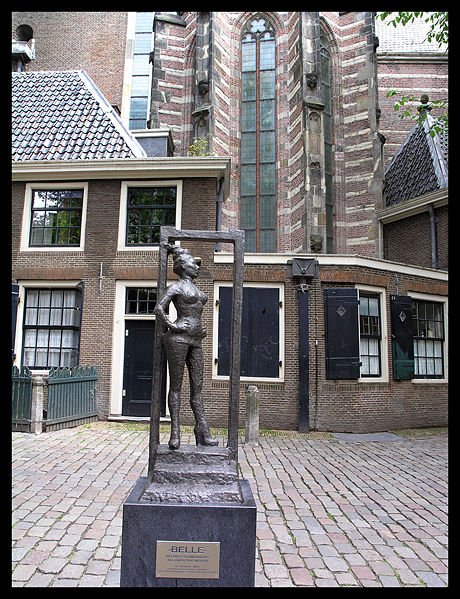
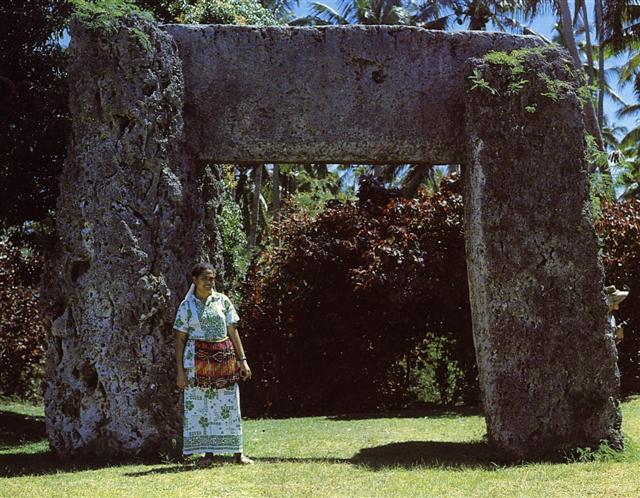
|
















.jpg)


.jpg)

